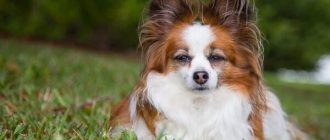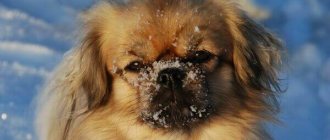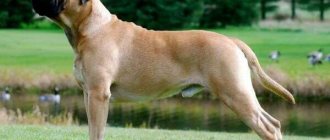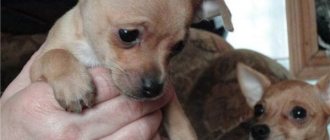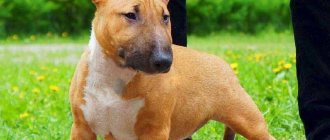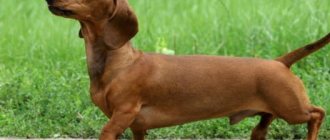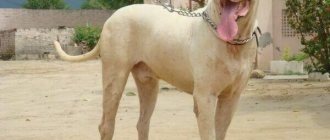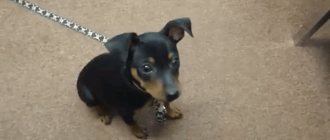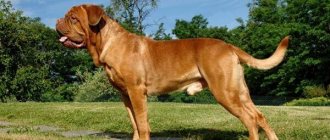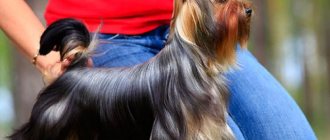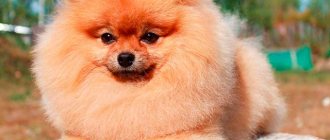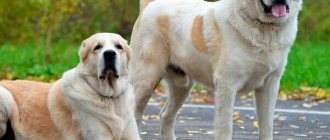The dachshund is recognized as one of the old burrowing dogs, which is distinguished by its down-to-earth appearance.
The dog is famous all over the world.
This is a compact breed with an elongated body and short legs.
He is distinguished by his intelligence, friendliness and natural charm.
Not without stubbornness.
The dog seems to understand everything, but the question in his gaze is: “Why do I need this?”
Origin story
The smooth-haired dachshund is recognized as almost the founder of the breed due to the fact that it is the oldest of the varieties.
Germany is recognized as the birthplace of the breed, for whose inhabitants burrow hunting was not so much a symbol of status as of survival. However, with the development of progress, the primary task of hunting faded into the background and began to represent a kind of tradition.
Also in Germany, the first description of the breed was compiled, which led to the adoption of an international standard and the spread of the breed abroad .
Thanks to export, the dog has gained fame all over the world, but in its homeland it gives way to the first place to the German Shepherd and is considered the second most popular.
The resettlement of dachshunds triggered the transformation mechanism. The selection process for breeding began, resulting in the development of the short-haired dwarf dachshund (miniature).
Due to its size, the dog was not afraid of complex holes.
A little later, a new variety appeared - the smooth-haired rabbit dachshund, which is classified as a decorative group rather than a service one..
The history of the appearance of the miniature dachshund breed
The selection work was carried out by F. Engelman, who lived in Germany and headed a group of breeders. The first attempts ended in failure, as they were made by crossing a standard dachshund with a miniature pinscher. The results were so unsuccessful that this idea had to be abandoned - the offspring, decreasing in size, lost important hunting qualities. Then breeders began to use other methods: they began to select the smallest representatives of the standard breed and obtain offspring from them. Of course, such work required much more effort and time. For some reason, small individuals produced few puppies in one litter.
However, interesting results emerged - small dachshunds that retained an excellent sense of smell and other important properties necessary for hunting dogs. By the end of the 19th century, the dwarf (miniature dachshund) and rabbit breeds of dachshunds were formed, the representatives of which differed from each other only in size, but their habits and disposition were the same. These dog breeds were successfully used in hunting hares and other small animals.
Much later, dwarf dachshunds, like rabbit dachshunds, became primarily decorative breeds rather than working ones. However, even today they can develop their abilities so that they can be worthy companions for hunters. It is known that the Queen of Great Britain had dwarf dachshunds in her home. Unfortunately, the prim English lady felt that the mating process could offend her royal dignity, as a result of which the “royal” dachshunds had no offspring. At the same time, dwarf dachshunds were extremely popular throughout Europe, only the owners had different goals: some took the dogs with them on hunts, for others they were miniature friends.
Smooth-haired dachshunds
This is a strong dog with massive bones, which is characterized by a low, stocky stature and an elongated muzzle . The ears are long and rounded.
The back is muscular and the chest is voluminous.
The tail is carried below the line of the back and appears thick and strong at the base. When excited, it resembles an antenna.
Despite the short limbs, the dogs' movements are free and sweeping, sometimes elegant.
Character of the breed
This is a playful dog, which nature has not forgotten to endow with intelligence and intelligence. Moreover, the dachshund has a unique sense of humor, which plays an important role in the life of the pet.
The animal has a well-developed sense of self-esteem, which is somewhat exaggerated in relation to the breed, and its independent character only complicates the situation . Despite its size, the dachshund is confident that it is a strong dog.
And when trying to refute this, he will not show his teeth.
The dachshund also has an innate sensitivity to smells and sounds, in which the breed can show no less interest than in games. Therefore, patience and perseverance are expected from the owner, which will pacify the dog’s curiosity and lead to the assimilation of the rules of behavior.
If the owner is not sure that the pet is under control, then wait a while to let the animal off the leash..
Training and education
The dachshund is not suitable as a small decorative dog. She needs to pay a lot of attention, especially in the first year of life. You can raise a pet from the first weeks of life. They start with potty training and regular commands.
More serious training begins at three months of age. A positive effect from the process can only be achieved with patience and respect for the dachshund.
The dog will not tolerate shouting or assault. Using such methods will develop rage and aggression in your pet. The dog will harbor a grudge against the owner and begin to take revenge.
Due to its developed intelligence, the animal quickly grasps all commands. To speed up the achievement of positive results, you can use treats during the training process. It is also important to find a balance between praise and severity.
Photo of what it looks like
The dachshund is easy to find among a number of other dogs.
The animal has short stature and an elongated body . But, despite the short legs, the dachshund can hardly be called clumsy. Whether walking or running, the dog is characterized by free movements, and a high raised head only highlights the beautiful bend of the posture.
The dachshund also has a strong, muscular body . The breed has a rich past, which to this day haunts animals, not allowing them to forget about their roots.
So, for example, a dachshund is a good watchman who, if he does not detain an intruder, will at least scare him away with a loud voice.
This is a selfless pet and family friend . Active but balanced.
Purchasing Tips
You can buy a Dachshund puppy at the market or through an advertisement without documents. Such a purchase is not expensive, but does not guarantee the purchase of a purebred dog.
Babies with a pedigree and documented documents confirming their belonging to the breed are much more expensive.
You can find out how much Dachshund puppies cost on Avito.ru and other ad sites. Purebred individuals have a price of no less than 20 thousand rubles.
If you do not plan to breed the breed or participate in exhibitions and competitions, then inexpensive options are quite suitable.
If you have big plans, then be sure to ask the seller for documents for the mother dog and the puppy.
In addition, carefully examine the animal for diseases. The Dachshund dog is little susceptible to disease, but poor care and heredity can affect its health.
Our pets can either make or spoil our lives. Therefore, when purchasing an animal, especially a dog, you need to find more information and carefully weigh your options.
Breed standard
| Index | Description |
| Head | Elongated, but not pointed. The transition from the forehead to the muzzle is weakly expressed. The jaws are strong, hidden by tightly fitting lips. The nose is oval. |
| Eyes | Oval, wide set. The look is not piercing, friendly. Color ranges from reddish brown to blackish brown. |
| Ears | Dropped, adjacent to the cheekbones. Large ones. |
| Teeth | Proportional size, even |
| Body | Muscular, developed. The back is not arched, strong and not drooping. |
| Limbs | The front legs are narrower than the hind legs. The withers and nape are well defined. |
| Tail | Smooth or crescent-shaped |
Expert opinion
Kozhevin Semyon Kirillovich
Expert dog handler.
Dachshunds are generally smart, understanding and attached to their owner, even somewhat annoying. At the same time, the animals are vindictive and touchy, so it is not recommended to resort to strict measures in relation to dachshunds. They love cleanliness and have sensitive hearing. This is an excellent watchman who does not know premature alarm.
Education
Dachshunds are smart and quick-witted creatures. They quickly understand what is required of them, and also learn bad things at lightning speed. That is why you need to start raising a smooth-haired dachshund puppy immediately after it arrives in your home. At the initial stage, it is very important to establish close contact with the dog and give him a clear outline of what is permitted. Education must be systematic and consistent. The learning process itself needs to be built, guided by the principle “from simple to complex.”
Since the smooth-haired dachshund (both mini and standard) is endowed with pronounced hunting instincts, it must be taught from childhood to calmly react to all sorts of stimuli. To do this, immediately after the end of the post-vaccination quarantine, it is recommended to visit different crowded places with the puppy so that he gradually gets used to strangers, transport and other animals.
What is the difference from longhair?
The long-haired dachshund represents the result of breeding activity when the smooth-haired dachshund was crossed with a spaniel .
But if you ask what the differences are, the answer is simple - practically nothing. A smooth-haired dachshund has short, thick, close-fitting fur, while a long-haired dachshund has an uneven coat length.
For example, the hair on the ears is shorter than on the body, and there is a beard on the muzzle. The tail is also covered with hair.
The smooth-haired dachshund has three color types:
- plain;
- bicolor;
- marble and tiger.
When, like a long-haired dog, the color of the boar predominates, as well as the color of the dry leaves. Or the same colors that are observed in the smooth-haired.
Dimensions and weight
Common sizes:
| Indicators | Male | Bitch |
| Height at withers | 27-22 cm | 25-20 cm |
| Weight | At least 9 kg (ideally 6.5-7 kg) | Up to 9 kg |
| Size (bust) | More than 35 cm | Up to 35 and above |
A harmonious combination of body parts implies a ratio of 1:1.7-1.8 in relation to the height of the withers, taking into account the elongation index of 170-180%.
Weight is taken according to the FCI standard (9 kg). However, it does not define a limit, for example, some pets weigh up to 12 kg.
Characteristics of this breed
Owners describe this breed as active, very inquisitive, energetic and cunning. This is a dog that gets along well with children. The dachshund is often called the queen of stubbornness. But there is nothing wrong with this; most likely, the owners want to emphasize the dog’s extra independence and natural intelligence.
It is these qualities that help the dog make quick decisions during the hunt. Even when a person is unable to help him in any way, he can resolve any dangerous situation himself.
The animal always acts wisely, assesses the situation in advance and calculates the smallest details. The dachshund does not even obey his owner's commands with lightning speed. She thinks first, and only then takes action. The dog is very understanding. Her sharp mind allows her to understand her owner’s orders the first time. Once you have a dachshund at home, you won’t have to repeat your command several times.
When hunting, she is aggressive towards her prey. Despite its small and fragile appearance, the dog poses a serious danger to animals that are twice its size. This pet is a strong and very smart hunter, brave and active, emotional. He also has passion, which does not prevent him from making a quick and balanced decision. The Dachshund soberly assesses any situation and weighs its options. The so-called death grip of the dachshund is known. She grabs prey by the head or neck and can hold it in a motionless position for a very long time.
Breed standards
Characteristic differences of the smooth-haired dachshund:
- Small, short legs;
- Elongated body;
- Slender and proud posture;
- Free movements, absence of any clumsy manifestations;
- Long head and narrowed nose;
- Strongly developed jaws that allow you to grab and hold prey for a long time;
- Oval eyes of dark brown or light brown color;
- Highly erect ears that are slightly rounded at the tips.
The Shorthaired Dachshund has a short, coarse coat that lies very close to the body. The dog has eyebrows, a small beard and mustache. The long-haired breed is characterized by a soft coat of coat of varying lengths. On the ears and hind limbs it is slightly longer. The colors are different, as can be seen from many photographs that you can find on the Internet. Only short-haired dogs can be one color. They are sable, red or fawn in color. The wirehaired breed comes in any color.
The ideal weight of the breed reaches 7 or 8 kg - this is if we talk about the standard classification.
Animal temperament and character
The main difference is energy and cheerfulness. Owners never tire of repeating that their dogs can run around on the lawn for hours, turning everything over. They love active games, frolicking with children, running after a stick or ball. A dog is a faithful friend for children as it actively participates in all games and fun.
They are very devoted to the family in which they live. Perfect not only for young and active children, but also for older people. Known to be great companions and travelers. They tolerate long trips well, get tired little, and are undemanding in care.
Dachshunds get along well with other pets, but can often be jealous of their owners. They need an attentive breeder, a loving and gentle trainer who will be moderately demanding and affectionate.
Basic colors
The color of the smooth-haired dachshund is divided into three types:
- Single color : reddish-yellow, red and fawn. An admixture of black hair predominates here. Red color is more valuable than fawn or reddish-yellow. Reddish brown is undesirable, as is white. However, single marks do not lead to disqualification.
- Two-tone : brown, dark and black. Fawn and reddish-brown markings above the eyes also appear. However, the spread of such marks is undesirable. With regard to the white color, it is stricter, but single markings, similar to the one-color type, do not lead to disqualification.
- Marble and brindle (spotted) : gray, black and red predominate. Small beige and gray spots are allowed. Dark and light colors are not desirable.
Dachshund color standard according to RKF
The Russian Canine Federation has officially recognized the following colors for all types of dachshunds:
- brown and tan;
- redhead;
- black and tan;
- brindle;
- marble based on brown or black.
Boar coloring is allowed only for wire-haired dachshunds.
Fans of the breed know that there are also officially unrecognized colors, for example, sable or isabella. They are rare, but are of growing interest among hobbyists.
Advantages and disadvantages
Positive aspects of the breed:
- intelligence;
- sociability and friendliness;
- intelligence;
- endurance;
- courage and good makings of a security guard;
- innate hunting qualities;
- compactness.
Negative sides:
- stubbornness and willfulness;
- touchiness;
- tendency to obesity;
- difficulties with training.
Features of character and behavior
The breed is a hunting breed, so the dogs are temperamental, wayward, but very smart and active . They learn quickly, remember commands and become good helpers.
Dachshunds are often included in the list of the most aggressive animals. They cannot boast of a balanced nervous system, so they can really react angrily to any irritant. With proper upbringing, this rarely happens.
Advantages
The advantages of the breed include:
- Goodwill, friendliness, lack of innate aggression, devotion to family;
- Positive thinking, activity until old age;
- Good relationship with children while maintaining distance;
- Good intellectual abilities, quick learner;
- Hunting instincts and developed qualities: sense of smell, vision, speed, endurance, agility;
- Security qualities;
- Variability (you can choose your pet by size, color and coat length).
Flaws
Main breed disadvantages:
- An unbalanced nervous system (which can lead to attacks of aggressiveness);
- Stubbornness, willfulness, tendency to dominate;
- Selfishness, jealous attitude towards the owner and personal belongings;
- Intolerance towards small children and their antics, towards small animals;
- Destructiveness (gnaw, tear, spoil things);
- Tendency to run away due to strong instinct.
Types by size
Dachshunds are divided into several types: standard , miniature (dwarf) and rabbit.
When a breed is divided by size, the girth of the chest is taken as a basis, not the height at the withers.
| Variety | Weight | Chest circumference |
| Standard | Up to 9 kg. The above indicator is recognized as a breed, but is not awarded an “excellent” rating. | 35 cm |
| Miniature (dwarf) | 3.5 kg | 30-35 cm |
| Rabbit | 4-5.5 kg | 30 cm |
Measurements are taken for those dogs that have crossed the 15 month mark.
Life expectancy, illness and health
On average, dachshunds live 12-15 years, but they are not without a tendency to a number of diseases that interfere with the normal course of a pet’s life.
Let's list the main:
- Skin dystrophy. Characterized by rough folds with dark pigmentation.
- Swimmer's syndrome. It is observed in puppies, forcing them to crawl. Despite the fact that this pathology is characterized by rapid development, the disease is not without weaknesses and can be successfully treated with timely help.
- Pinched spinal nerves. It is more often observed in older dogs. Leads to paralysis of the hind limbs.
- Dysplasia. Also common in older dogs.
- Discopathy. Displacement of vertebral discs.
- Eye diseases. Glaucoma and cataracts.
- Intestinal diseases.
- Infectious diseases.
- Colds and hypothermia.
- Urolithiasis and renal failure. Caused by the consumption of low-quality feed.
- Diabetes. Young dogs are more likely to suffer from this disease.
- Obesity. It develops due to a lack of physical activity, hormonal imbalances and lack of a balanced diet.
- Seborrhea, eczema. Follows food allergies and repeated bathing.
Tail
Set on relatively low, somewhat saber-shaped in the last third of the entire length, without bends or knots. PS Young dogs with an active lifestyle may develop problems with the spine; sudden jumps and falls should be avoided as the puppy grows up; later, a back injury can lead to paralysis. It is necessary to exclude such a serious and common anomaly as a defect of the intervertebral discs, which can result in paralysis of the limbs. The breed standard is the same for all varieties!
Basic rules of care
When caring for the coat, a terry towel and a bristle brush (not hard) are welcome.
Water procedures should be carried out exclusively in warm water and shampoo should be used no more than 3-4 times a year.
The eyes are also susceptible to contamination. Timely cleansing of secretions that accumulate in the corners of the eyes is required. The procedure is carried out using a cloth pre-moistened in warm water.
Regarding the ears, it is recommended to carry out a monthly check with an examination of the ear canals, followed by the removal of wax and dirt. Cleansing is carried out using a cotton swab moistened with warm water or Vaseline oil.
NOTE!
In dental care, it is recommended to purchase special brushes, gels and pastes.
The nails are trimmed with a special nail clipper once every 3 months (for a puppy once every 2 weeks) as they grow .
Features of caring for a dachshund dog
Those who buy a dachshund should be aware of its features. Such dogs live well in a city apartment, even a small one. But you immediately need to create suitable conditions for her. There must be a soft place, preferably a house, in which the pet can hide. Immediately after the puppy arrives in the house, you need to remove all small things. After all, dachshunds chew everything they come across. It is necessary to hide food and food - these dogs are prone to theft.
You need to walk your pet twice a day for at least an hour. The collar does not fit the dachshund; she takes it off easily. That's why they walk with a special harness. In cold or rainy weather, it is advisable to wear overalls for your pet when walking.
For the same reason, it is not recommended to leave your pet unattended for a long time. This dog can seriously misbehave: dig up the sofa, peel off the wallpaper, chew the shoes he finds. Due to their strong jaws, ordinary toys are not suitable for them; they quickly chew them to shreds.
But if you raise a puppy correctly, an adult dog will not create any special problems. Caring for her is easy. You just need to wash your pet regularly, monitor the condition of the eyes, ears, and teeth. Wire-haired varieties need to be trimmed and their beard washed regularly, while long-haired varieties need to be combed. This dog grows claws on its front paws very quickly. Therefore, it is recommended to trim them once a month.
What to feed your dachshund
Representatives of this breed can be fed both dry food and natural food. It is not advisable to choose economy or premium food. They contain a lot of grains and by-products. They will not bring any benefit to the animal. It is better to buy super premium or holistic food for your pet. They contain all the necessary nutrients and do not lead to weight gain.
If it is possible to feed your pet natural food, you must give him lean meat, sea fish, rice or buckwheat, cottage cheese, yogurt, vegetables, and herbs. Rye crackers or dry cookies are suitable as a treat.
Health
Due to their body structure, dachshunds are susceptible to spinal diseases. They often have congenital discopathy. Against this background, by the age of 3-4 years, the pet develops an intervertebral hernia. This can cause the hind legs to become weak or the urination process to be disrupted. To avoid this, you need to prevent obesity and protect your pet from jumping from heights.
Another problem often occurs in bitches. They have high hormonal levels, which can cause a false pregnancy to develop. Therefore, it is recommended to sterilize dogs that are not involved in breeding. And in males, due to a surge of hormones, high sexual activity develops.
Adult dogs can also develop the following pathologies:
- tartar, periodontal disease;
- heart failure;
- osteoporosis;
- baldness;
- ear mite;
- diabetes.
It is not recommended to treat your pet at home. You should definitely contact a veterinarian.
The video will tell you how to care for your pet.
How to feed
Dachshunds have a high tendency to diseases of the digestive system, which places a certain burden of responsibility on the owner in choosing the diet and portion sizes.
First of all, the diet should be rich in meat, fish and offal (2/3) . The remainder is occupied by vegetables and fruits. This will replenish the level of vitamins and minerals in the body.
The introduction of fermented milk products high in calcium is also encouraged.
Remember that the diet is based on the caloric content of foods (90 cal per kg of weight) . Your dachshund should always have access to water to prevent the development of kidney disease.
Price range
Typically, the price range for dachshund puppies is wide. Market puppies range in price from $30 to $100 . They will demand more for the pedigree.
Here the cost reaches $300, and for small breeds the prices are even higher. This is explained by the increased attention and popularity of miniature dogs.
Moreover, in litters of small dachshund breeds you rarely see more than 4-5 puppies.
For example, the price of a purebred rabbit dachshund reaches $1,000.
Hunting
The first German name of the breed is Dachshund , which speaks for itself, because in direct translation it sounds like one at war with a badger. The breed was bred for burrow work and the appearance of the dogs emphasizes this “trajectory”. It is interesting that every dachshund puppy is born a companion, and then, depending on training, he becomes a miner or a hound. In rare cases, Dachshunds are used for feeding game from the water, rutting ungulates and wild boars. In general terms, representatives of the breed can be called gambling hunters; hunting for the sake of “sporting interest” does not inspire them.
Note! Practice proves that any Dachshund, regardless of origin, can be trained to work in a hole.
Traditional burrow hunting includes several stages of training. Dogs train in artificial burrows and learn to escape from opponents' grips. At the same stage, the dog’s courage and its desire to go into the hole are assessed. Training to drive an animal and to feed a wounded animal is fundamentally different, since the four-legged animal should not get into a fight. Controlling aggression towards an animal is a difficult task and not every dog can cope with it.
How to choose?
When choosing a puppy, it is advised to pay attention to:
- Tail shape. The tail is smooth, mobile and without deformation.
- The bite, the correctness of which begins to be assessed as early as 4 weeks.
- Presence of a hernia. This is not dangerous, but in the future you will not be able to do without surgery, and therefore a good chance to reduce the cost.
- Musculoskeletal system. Avoid puppies with waddling bottoms and floppy legs.
Healthy puppies, as a rule, are willing to make contact, so if your pets run away when you approach, it’s a reason to think about a breeder.
Also remember that the market is replete with non-purebred breedings, which are often passed off as thoroughbreds. The buyer may be sold a puppy, which in the future will grow up with proportions atypical for a dachshund, and shown someone else's dog under the guise of its mother.
